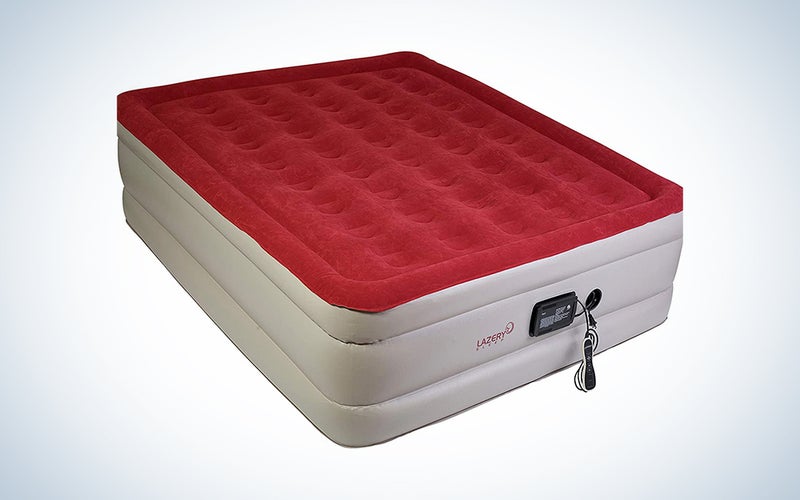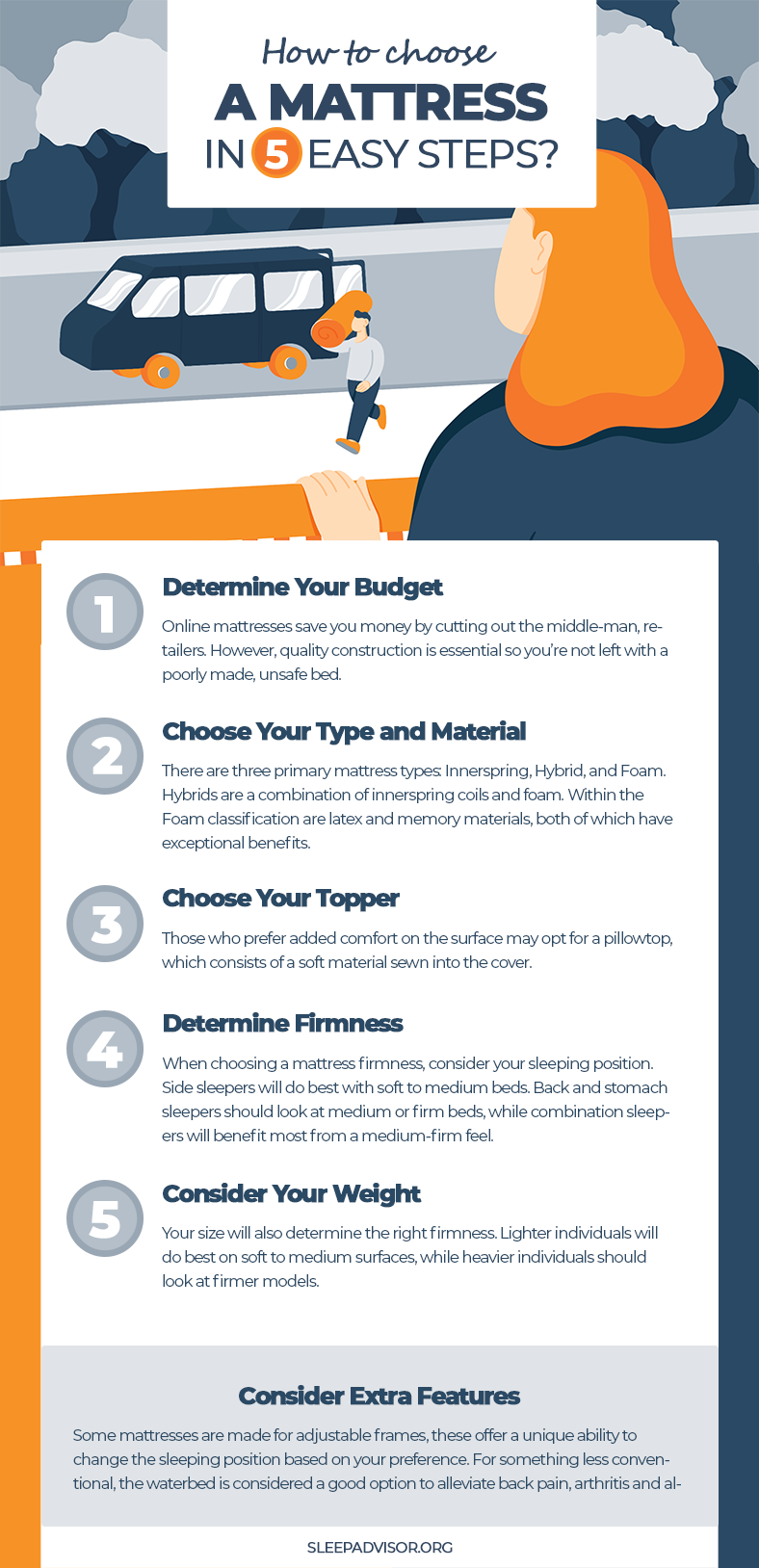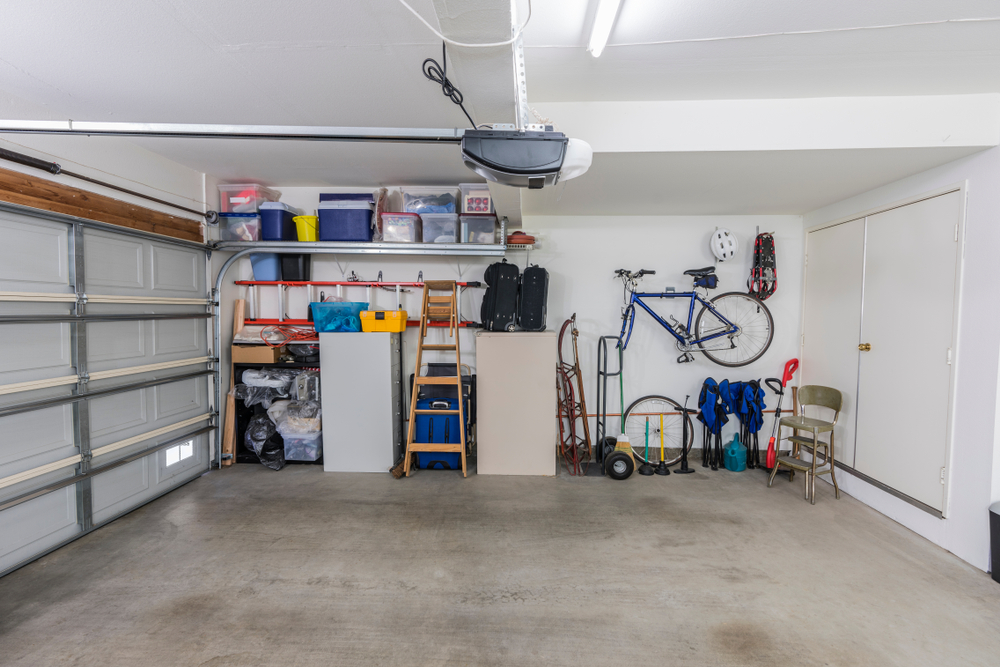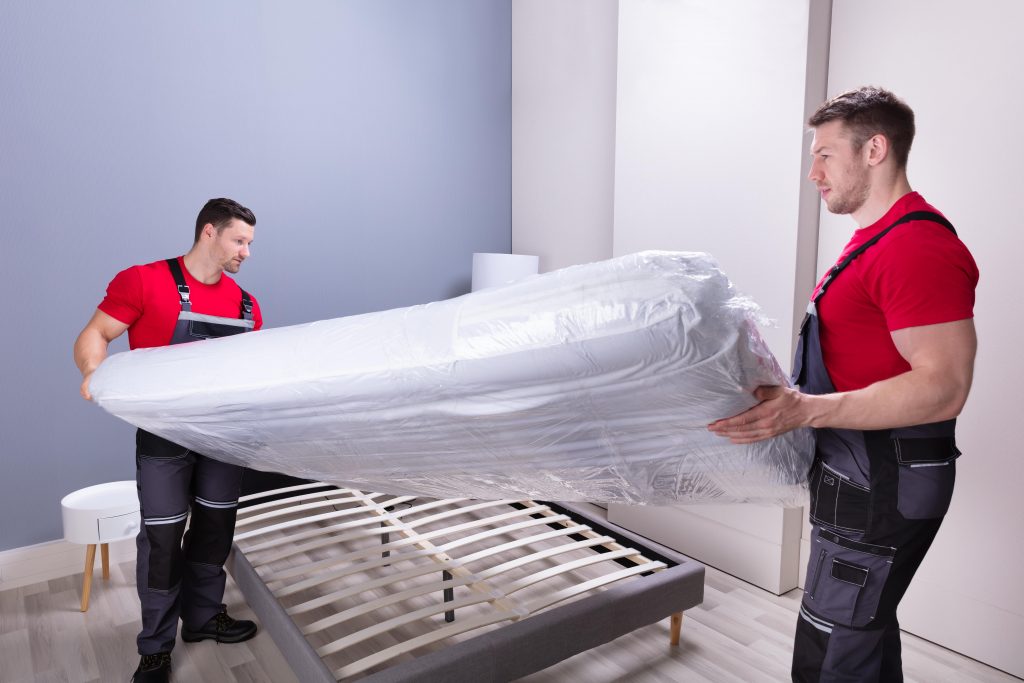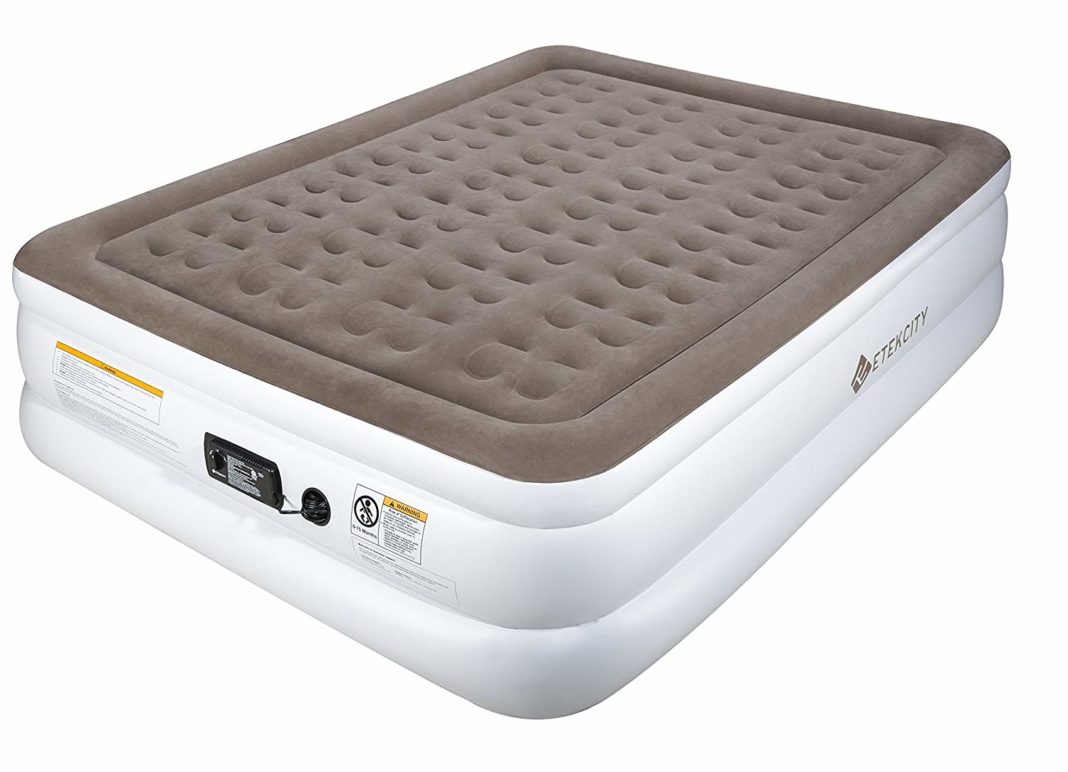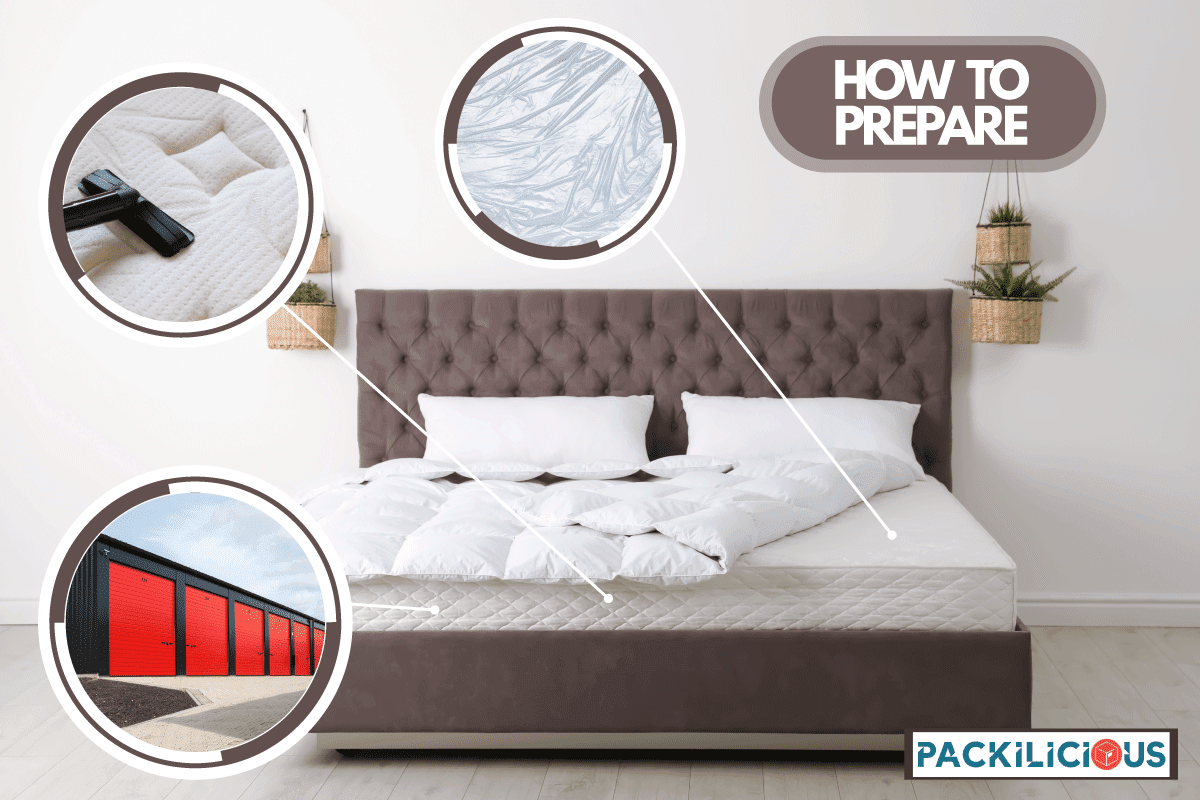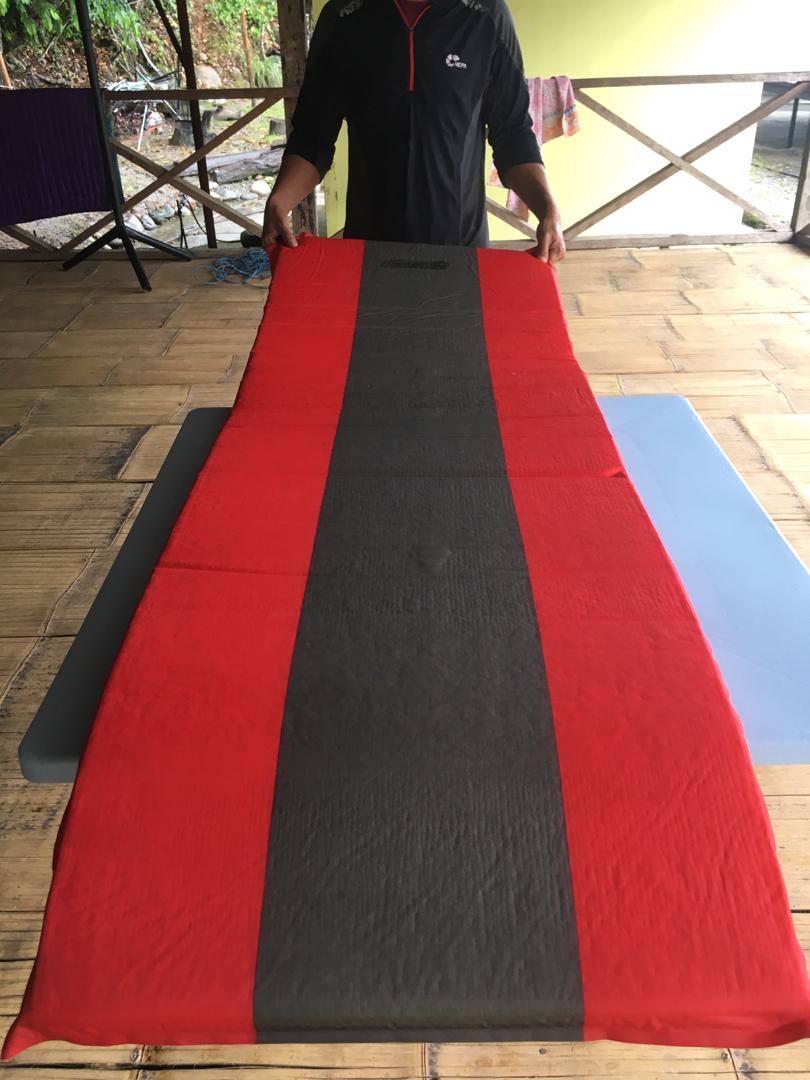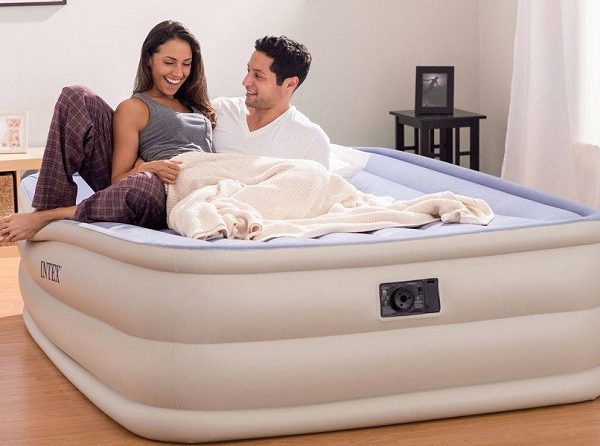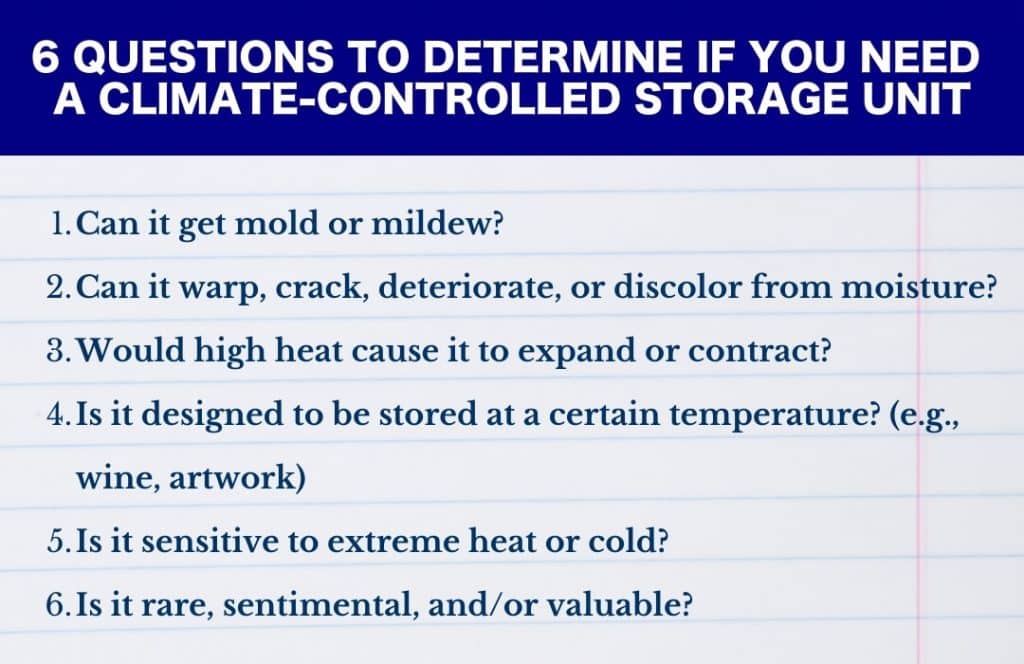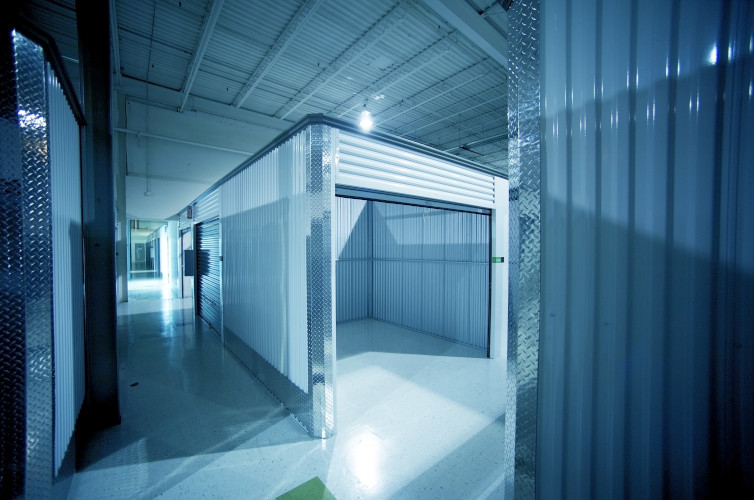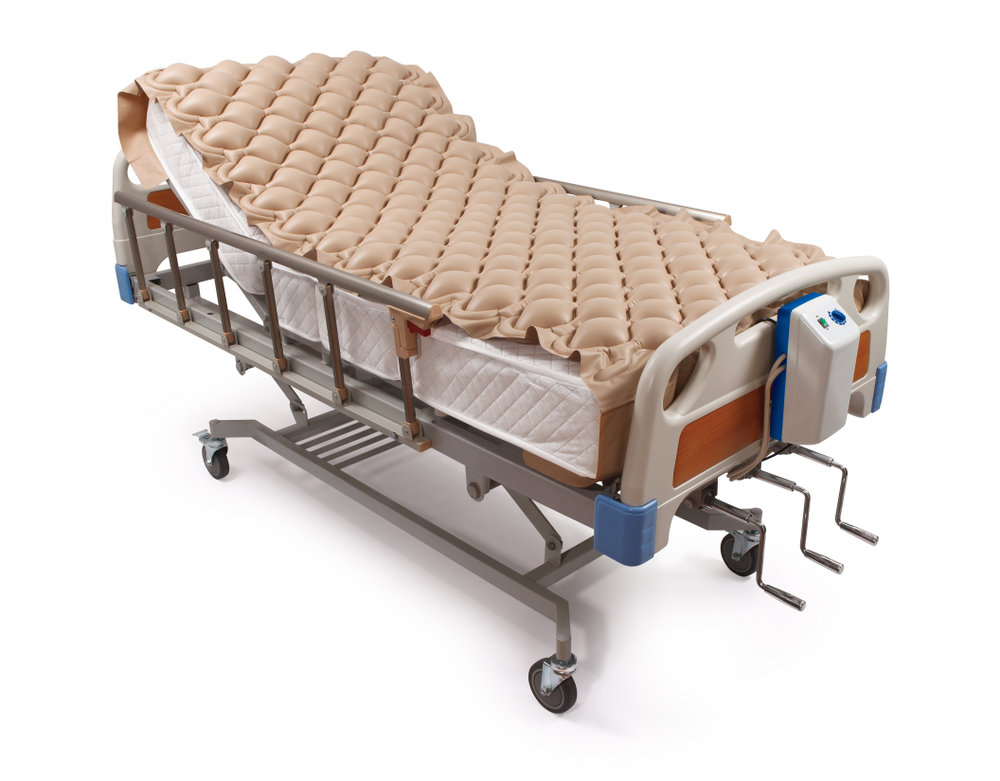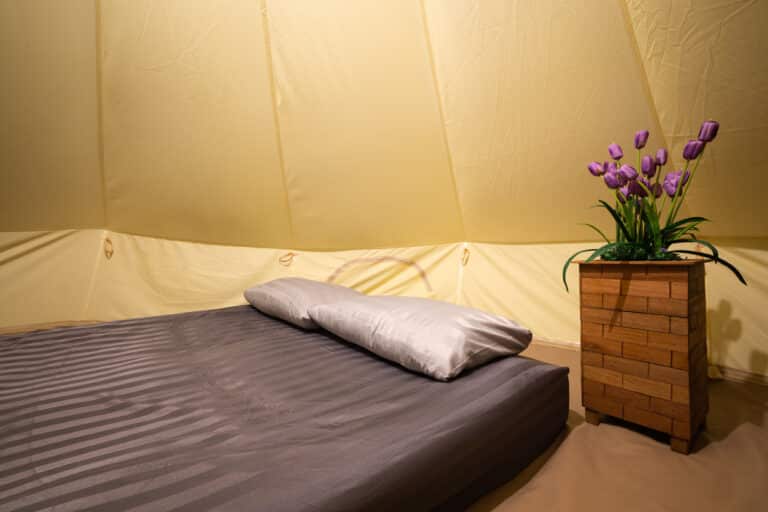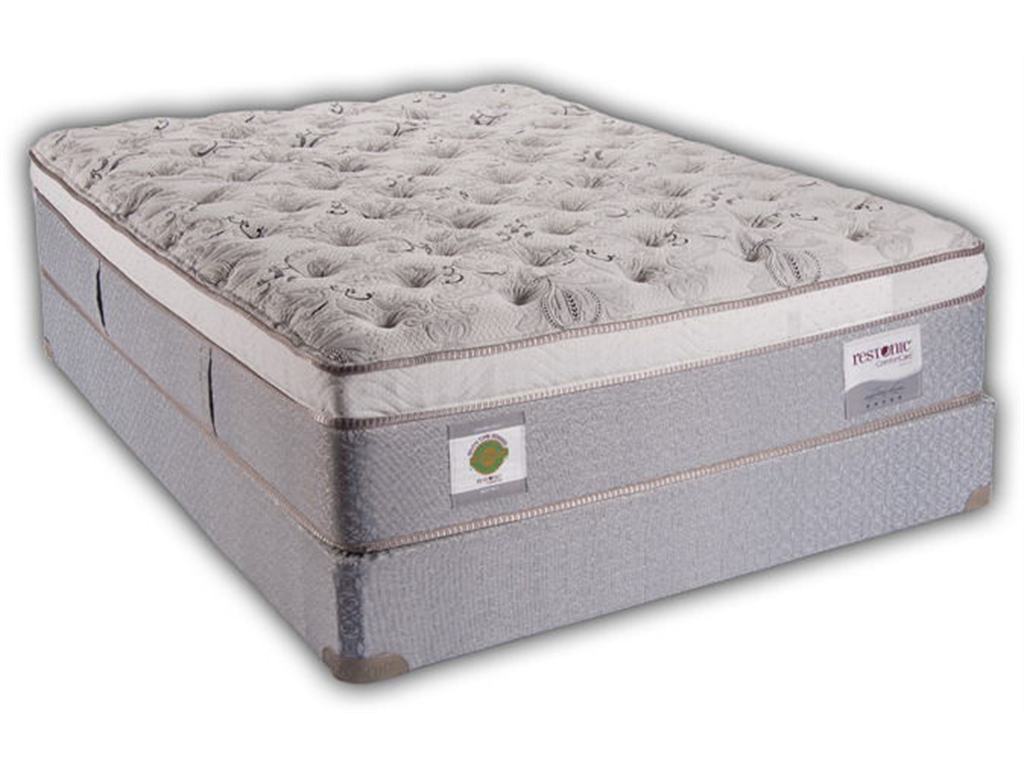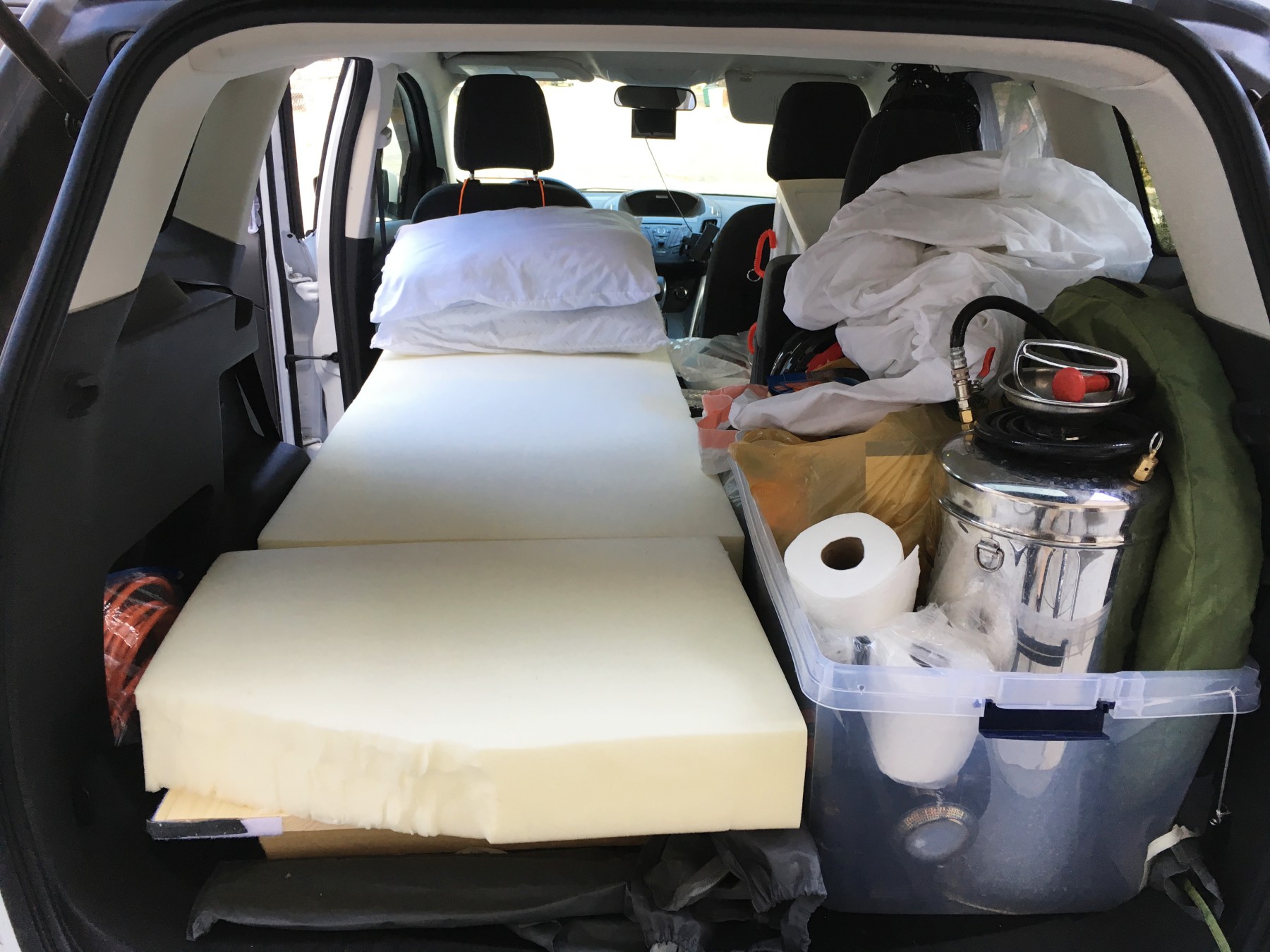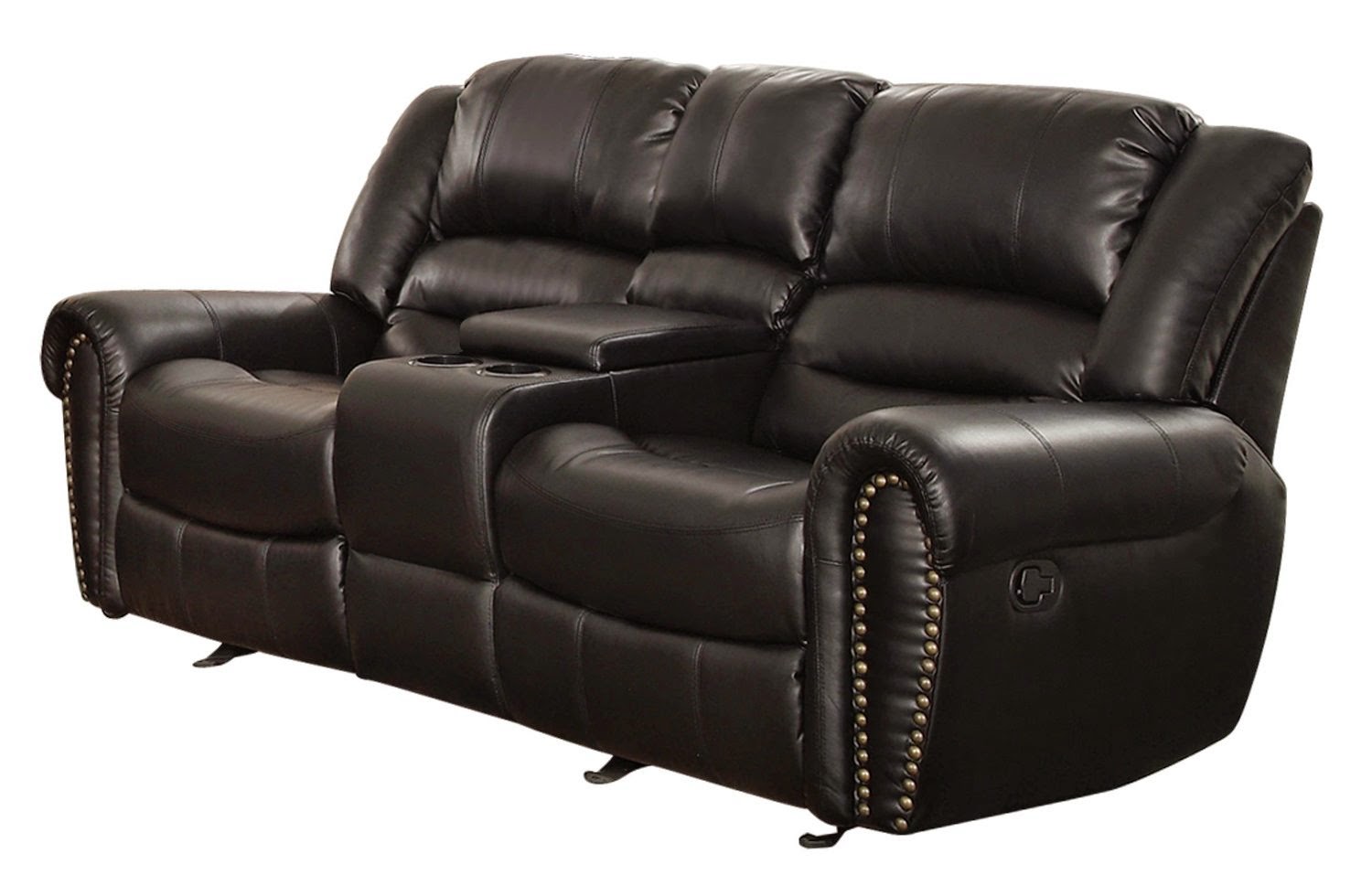Storing an air mattress in cold temperatures can be a daunting task, especially if you live in an area with harsh winters. But don't fret, with the right precautions, you can ensure your air mattress stays in good condition for years to come. If you need to store your air mattress in cold temperatures, the first thing you need to do is properly clean and dry it. Any moisture left on the mattress can freeze and cause damage. So, make sure to thoroughly wipe down the surface with a dry cloth and let it air dry before storing. Next, deflate the mattress completely. This is crucial as leaving any air inside can cause the mattress to expand and potentially tear or puncture when exposed to cold temperatures. Make sure to get all the air out by gently pressing down on the mattress while rolling it up. When it comes to choosing a storage location, it's important to find a dry and well-insulated area. Avoid storing your air mattress in a damp basement or garage, as this can lead to mold and mildew growth. Instead, opt for a closet or a temperature-controlled storage unit. Finally, wrap your air mattress in a heavy-duty plastic bag or a mattress storage bag. This will provide an extra layer of protection against moisture and potential pests. Seal the bag tightly to keep the air mattress well-protected during the cold months.How to Store an Air Mattress in Cold Temperatures
Just like cold temperatures, hot temperatures can also damage your air mattress if not stored properly. If you live in an area with scorching summers, here are some tips to help you properly store your air mattress. First and foremost, make sure to clean and dry your air mattress thoroughly before storing it. Any moisture left on the mattress can cause mold and mildew growth in hot temperatures. Use a mild cleaner and a dry cloth to wipe down the surface of the mattress. Next, deflate the mattress completely and roll it up tightly. Leaving any air inside can cause the mattress to expand and potentially tear when exposed to heat. Rolling it up tightly will also save space and make it easier to store. When choosing a storage location, avoid areas that are prone to extreme heat, such as a hot attic or a garage. Instead, look for a cool and dry area, like a closet or a temperature-controlled storage unit. For extra protection against heat and potential pests, wrap your air mattress in a thick and heavy-duty plastic bag. Make sure to seal the bag tightly to keep the mattress well-protected. Properly storing your air mattress in hot temperatures will not only prolong its lifespan but also ensure a comfortable and restful sleep when you decide to use it again.How to Properly Store an Air Mattress in Hot Temperatures
The ideal temperature for storing an air mattress is between 50-70 degrees Fahrenheit. This temperature range ensures that the mattress is not exposed to extreme heat or cold, which can cause damage. In addition to the right temperature, it's also important to consider humidity levels. High humidity can lead to mold and mildew growth, while low humidity can cause the air mattress to dry out and potentially crack. That's why it's essential to store your air mattress in a dry and well-ventilated area. If you live in an area with harsh weather conditions, it's best to invest in a temperature-controlled storage unit. These units maintain a consistent temperature and humidity level, ensuring your air mattress stays in good condition. Remember to always clean, dry, and deflate your air mattress before storing it, regardless of the temperature. This will help prevent any potential damage and ensure a comfortable sleep when you take it out again.Best Temperature for Storing an Air Mattress
Whether it's hot or cold, extreme temperatures can cause damage to your air mattress if not properly protected. Here are some tips to protect your air mattress from extreme temperatures: Choose the right storage location: As mentioned earlier, it's crucial to store your air mattress in a cool and dry area. Avoid areas that are prone to extreme temperatures, such as an attic, basement, or garage. Wrap it up: To provide extra protection, wrap your air mattress in a plastic bag or a mattress storage bag. This will not only protect it from temperature fluctuations but also from potential pests. Check on it periodically: If you're storing your air mattress for an extended period, it's essential to check on it periodically. This will allow you to catch any potential damage early on and prevent it from getting worse. Invest in a mattress protector: To protect your air mattress from both extreme temperatures and spills, consider investing in a mattress protector. This will provide an extra layer of protection and make cleaning and maintenance easier. By following these tips, you can ensure your air mattress stays in good condition no matter the temperature outside.How to Protect Your Air Mattress from Extreme Temperatures
Storing an air mattress in a garage can be a convenient option, especially if you have limited space in your home. However, garages can be prone to extreme temperatures and humidity, making it important to take extra precautions when storing your air mattress. Clean and dry: Before storing your air mattress in the garage, make sure to clean and dry it thoroughly. Use a mild cleaner and a dry cloth to wipe down the surface and let it air dry completely. Deflate and roll: To prevent any potential damage, make sure to fully deflate your air mattress and roll it up tightly. This will also save space in your garage. Protect from moisture: Since garages can be prone to moisture, it's essential to wrap your air mattress in a heavy-duty plastic bag or a mattress storage bag. This will prevent any potential mold and mildew growth. Keep it off the ground: If possible, avoid storing your air mattress directly on the garage floor. Instead, place it on a raised surface, such as a shelf or a pallet, to protect it from any potential spills or moisture. By following these tips, you can safely store your air mattress in your garage without worrying about any potential damage.Tips for Storing an Air Mattress in a Garage
Basements can be a great storage option for air mattresses, as they are typically cooler and less prone to extreme temperatures than other areas of the house. However, basements can also be damp and musty, making it essential to take the necessary precautions when storing your air mattress. Clean and dry: Before storing your air mattress in the basement, make sure to thoroughly clean and dry it. Use a mild cleaner and a dry cloth to wipe down the surface and let it air dry completely. Deflate and roll: It's crucial to fully deflate your air mattress and roll it up tightly to prevent any potential damage. Rolling it up tightly will also save space in your basement. Elevate from the ground: To protect your air mattress from dampness and potential pests, avoid storing it directly on the basement floor. Instead, place it on a raised surface, such as a shelf or a pallet. Consider using a dehumidifier: If your basement tends to be damp, consider investing in a dehumidifier to keep the moisture levels in check. This will not only protect your air mattress but also prevent any potential mold and mildew growth. By following these tips, you can safely store your air mattress in your basement and ensure it stays in good condition for future use.How to Store an Air Mattress in a Basement
Storing an air mattress in a closet can be a convenient and space-saving option. However, closets can also be prone to humidity, making it crucial to take the necessary precautions to protect your air mattress. Clean and dry: Before storing your air mattress in a closet, make sure to clean and dry it thoroughly. Use a mild cleaner and a dry cloth to wipe down the surface and let it air dry completely. Deflate and roll: To prevent any potential damage, make sure to fully deflate your air mattress and roll it up tightly. This will also save space in your closet. Use a mattress storage bag: To protect your air mattress from any potential pests and humidity, consider using a mattress storage bag. These bags are specifically designed to keep mattresses safe during storage. Keep it away from heat sources: Avoid storing your air mattress near heat sources, such as a heater or a vent. This can cause the mattress to dry out and potentially crack. By following these tips, you can safely store your air mattress in a closet and ensure it stays in good condition for future use.Properly Storing an Air Mattress in a Closet
If you live in an area with fluctuating temperatures, it's essential to take extra precautions when storing your air mattress. Here are some tips to keep your air mattress safe in changing temperatures: Choose a temperature-controlled storage unit: If possible, consider storing your air mattress in a temperature-controlled storage unit. This will ensure the mattress is not exposed to extreme temperatures and humidity. Wrap it up: To provide extra protection, wrap your air mattress in a plastic bag or a mattress storage bag. This will protect it from temperature changes and potential pests. Check on it periodically: It's important to check on your air mattress periodically, especially during extreme temperature changes. This will allow you to catch any potential damage early on and prevent it from getting worse. Keep it away from heat sources: As mentioned earlier, avoid storing your air mattress near heat sources to prevent it from drying out and potentially cracking. By following these tips, you can ensure your air mattress stays safe and protected in changing temperatures.How to Keep Your Air Mattress Safe in Changing Temperatures
A climate-controlled storage unit is the best storage option for an air mattress, as it maintains a consistent temperature and humidity level. If you have the means, it's highly recommended to store your air mattress in a climate-controlled storage unit. Clean and dry: Before storing your air mattress, make sure to clean and dry it thoroughly. Use a mild cleaner and a dry cloth to wipe down the surface and let it air dry completely. Deflate and roll: Properly deflate your air mattress and roll it up tightly. This will not only prevent any potential damage but also save space in the storage unit. Wrap it up: To provide extra protection, wrap your air mattress in a plastic bag or a mattress storage bag. This will prevent any potential damage from temperature fluctuations and potential pests. Keep it off the ground: To avoid any potential moisture, make sure to keep your air mattress off the ground. Place it on a raised surface, such as a shelf or a pallet. By following these tips, you can ensure your air mattress stays in excellent condition while in storage and is ready for use when you need it.Storing an Air Mattress in a Climate-Controlled Storage Unit
Storing your air mattress properly is key to preventing any potential damage. Here are some additional tips to help you prevent damage to your air mattress while in storage: Store it flat: Storing your air mattress flat will help maintain its shape and prevent any potential creases or folds that can lead to damage. Avoid weight on top: Do not stack heavy items on top of your air mattress. This can cause damage to the surface and potentially puncture the mattress. Protect from pets: If you have pets, make sure to keep them away from your air mattress in storage. Their claws or teeth can cause damage to the surface of the mattress. Do not use sharp objects: Avoid using sharp objects near your air mattress, as they can easily puncture or tear the surface. This includes when inflating or deflating the mattress. By following these tips, you can prevent any potential damage to your air mattress and ensure it stays in excellent condition for future use.How to Prevent Damage to Your Air Mattress in Storage
The Importance of Storing Your Air Mattress at the Right Temperature
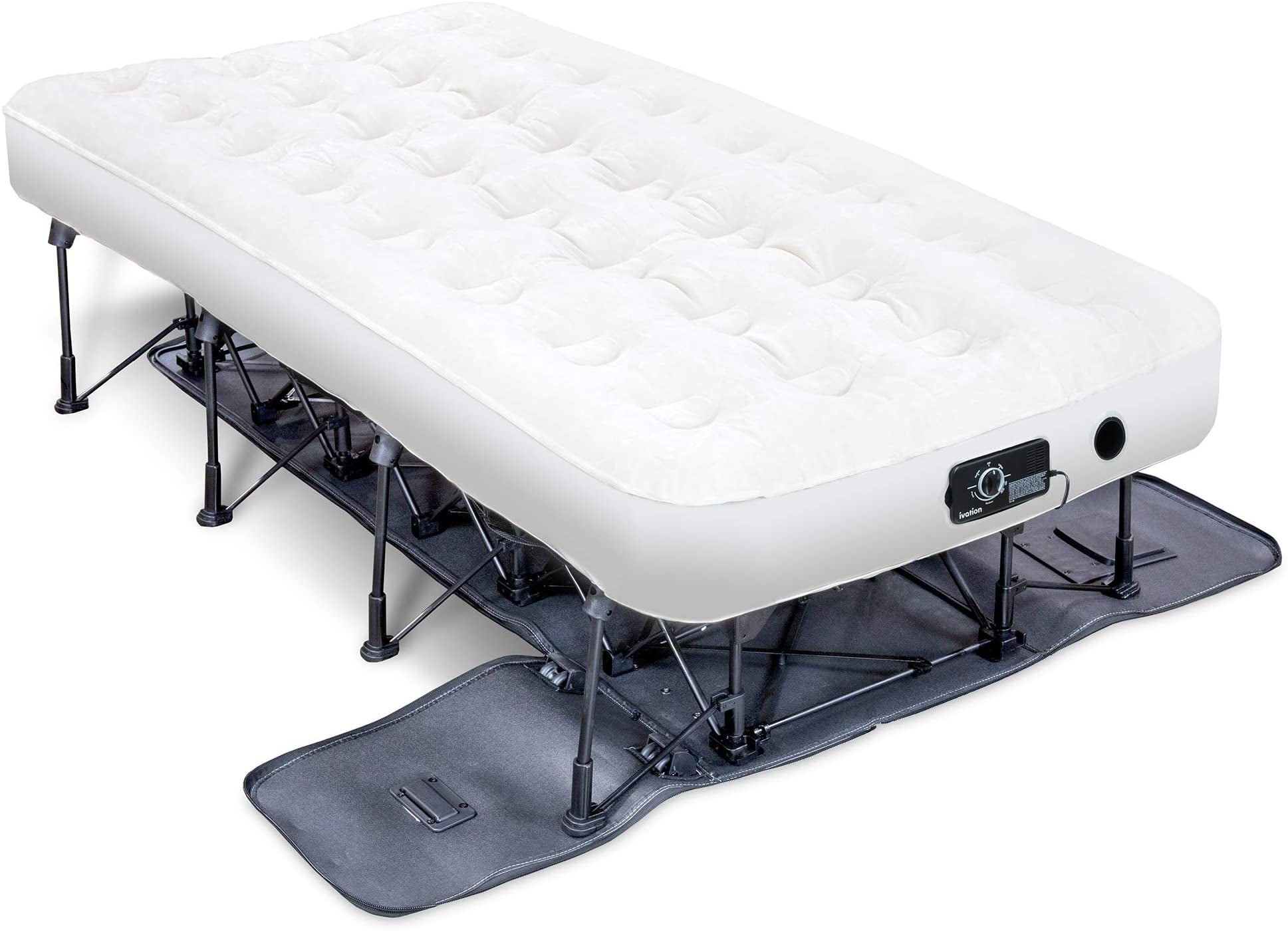
Proper Storage for an Air Mattress
 When it comes to storing your air mattress, temperature is an often overlooked factor. Many people simply deflate the mattress and toss it into a closet or basement without considering the impact of the storage temperature. However, the temperature of the storage space can greatly affect the durability and longevity of your air mattress.
Air Mattress Materials
To understand the importance of storage temperature for an air mattress, it's important to first understand the materials used to make it. Most air mattresses are made of PVC, a type of plastic that is flexible and durable. However, PVC can become brittle and crack when exposed to extreme temperatures. This is why proper storage is crucial for maintaining the integrity of your air mattress.
The Ideal Temperature for Storage
The ideal temperature for storing an air mattress is between 50-70 degrees Fahrenheit. This is considered room temperature and is the temperature range that most homes are kept at. Storing your air mattress at this temperature range will ensure that the PVC material remains flexible and does not become brittle.
High and Low Temperatures
Storing your air mattress in a location that experiences high or low temperatures can have a major impact on its lifespan. Extreme heat can cause the PVC material to expand, which can lead to air leaks and ultimately render the mattress unusable. On the other hand, extreme cold can cause the PVC to contract, making it more prone to cracking. It's important to avoid storing your air mattress in areas such as attics, garages, or outdoor sheds where the temperature can fluctuate greatly.
Other Factors to Consider
In addition to temperature, there are other factors to consider when storing your air mattress. For example, it's important to keep the mattress away from sharp objects or rough surfaces that could puncture or damage it. It's also a good idea to clean and dry the mattress before storing it to prevent the growth of mold or mildew.
Conclusion
In conclusion, properly storing your air mattress at the right temperature is crucial for maintaining its durability and longevity. By storing it at room temperature and avoiding extreme temperatures, you can ensure that your air mattress will be ready for use whenever you need it. So next time you deflate your air mattress, be sure to store it in a cool, dry place to keep it in top condition.
When it comes to storing your air mattress, temperature is an often overlooked factor. Many people simply deflate the mattress and toss it into a closet or basement without considering the impact of the storage temperature. However, the temperature of the storage space can greatly affect the durability and longevity of your air mattress.
Air Mattress Materials
To understand the importance of storage temperature for an air mattress, it's important to first understand the materials used to make it. Most air mattresses are made of PVC, a type of plastic that is flexible and durable. However, PVC can become brittle and crack when exposed to extreme temperatures. This is why proper storage is crucial for maintaining the integrity of your air mattress.
The Ideal Temperature for Storage
The ideal temperature for storing an air mattress is between 50-70 degrees Fahrenheit. This is considered room temperature and is the temperature range that most homes are kept at. Storing your air mattress at this temperature range will ensure that the PVC material remains flexible and does not become brittle.
High and Low Temperatures
Storing your air mattress in a location that experiences high or low temperatures can have a major impact on its lifespan. Extreme heat can cause the PVC material to expand, which can lead to air leaks and ultimately render the mattress unusable. On the other hand, extreme cold can cause the PVC to contract, making it more prone to cracking. It's important to avoid storing your air mattress in areas such as attics, garages, or outdoor sheds where the temperature can fluctuate greatly.
Other Factors to Consider
In addition to temperature, there are other factors to consider when storing your air mattress. For example, it's important to keep the mattress away from sharp objects or rough surfaces that could puncture or damage it. It's also a good idea to clean and dry the mattress before storing it to prevent the growth of mold or mildew.
Conclusion
In conclusion, properly storing your air mattress at the right temperature is crucial for maintaining its durability and longevity. By storing it at room temperature and avoiding extreme temperatures, you can ensure that your air mattress will be ready for use whenever you need it. So next time you deflate your air mattress, be sure to store it in a cool, dry place to keep it in top condition.




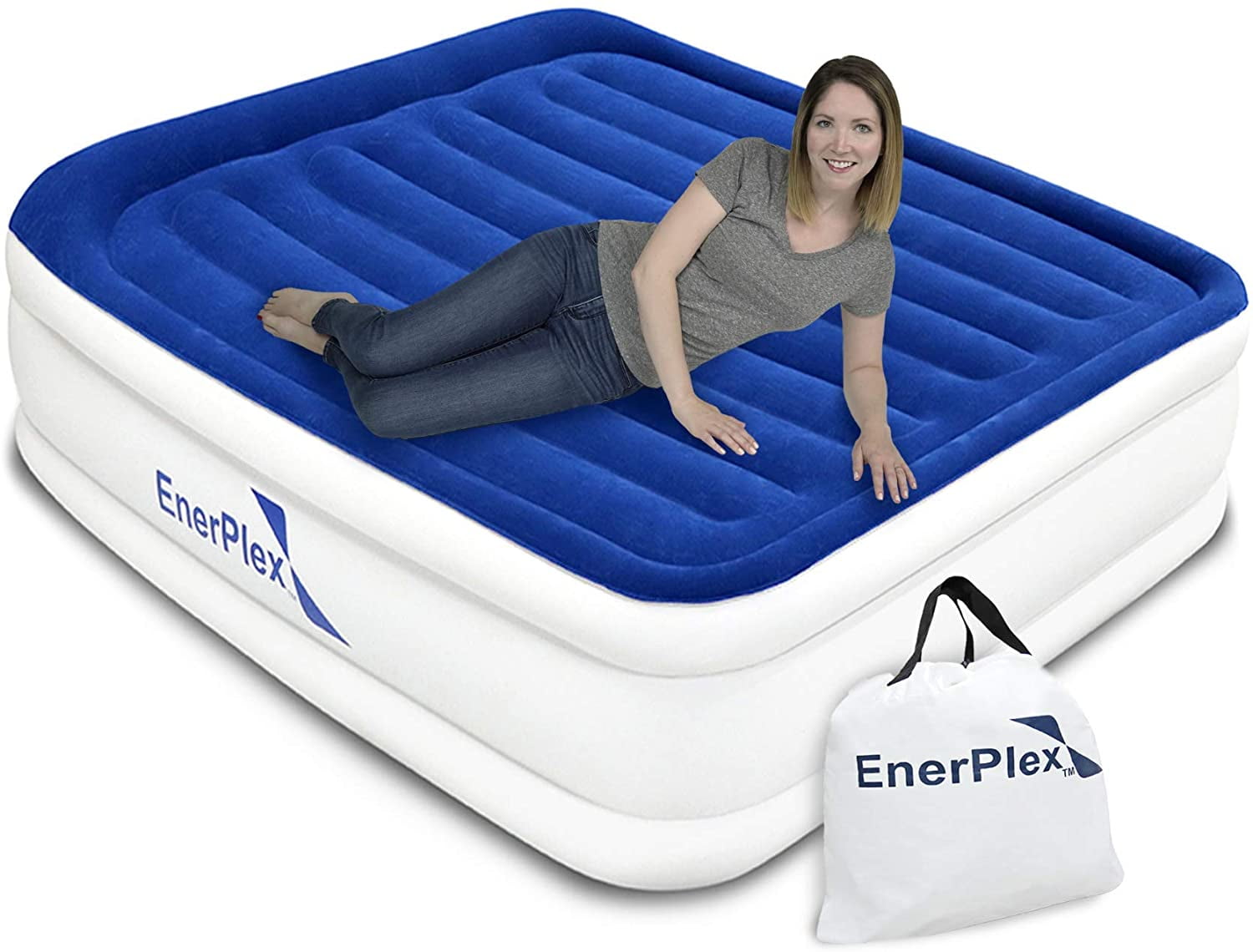
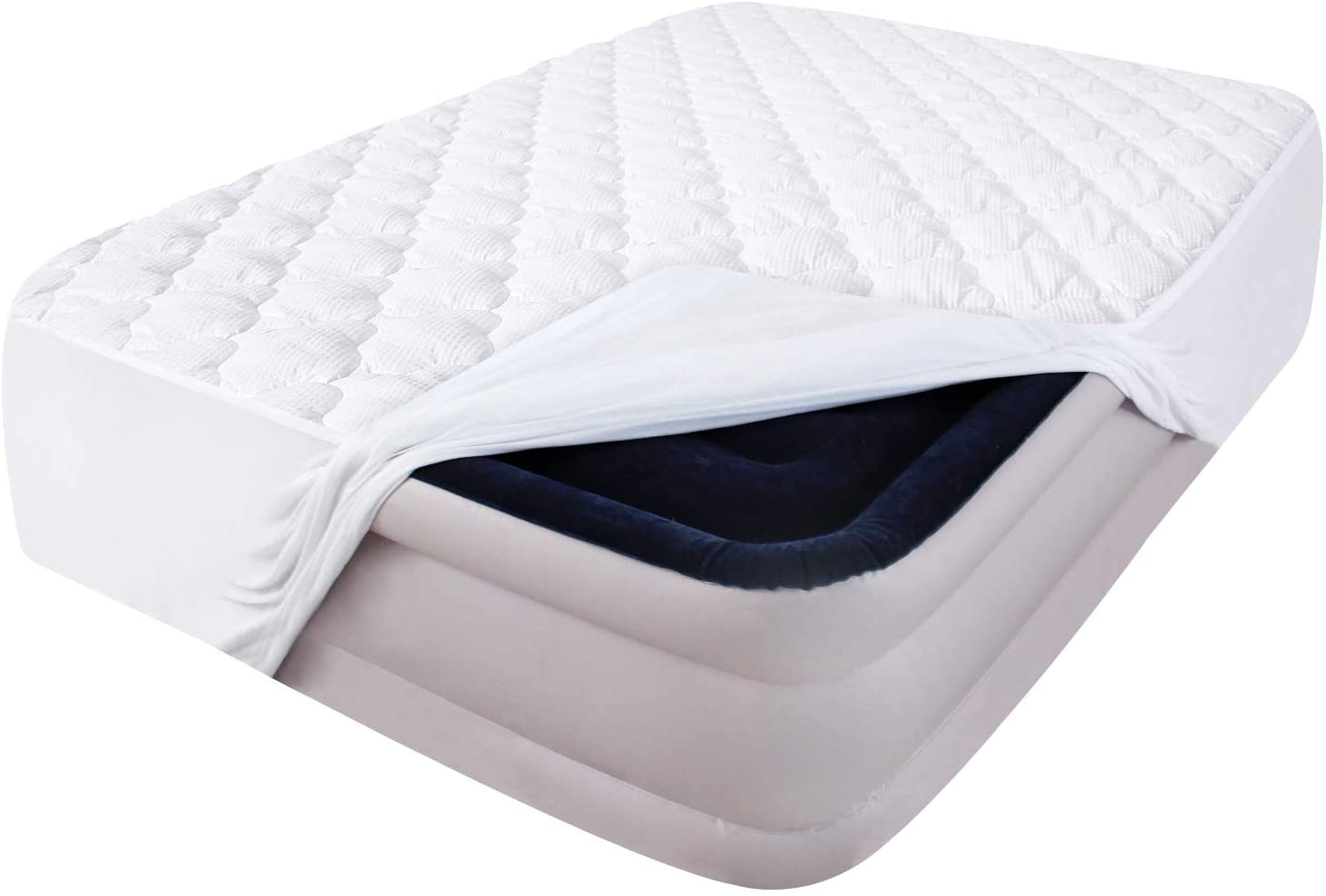
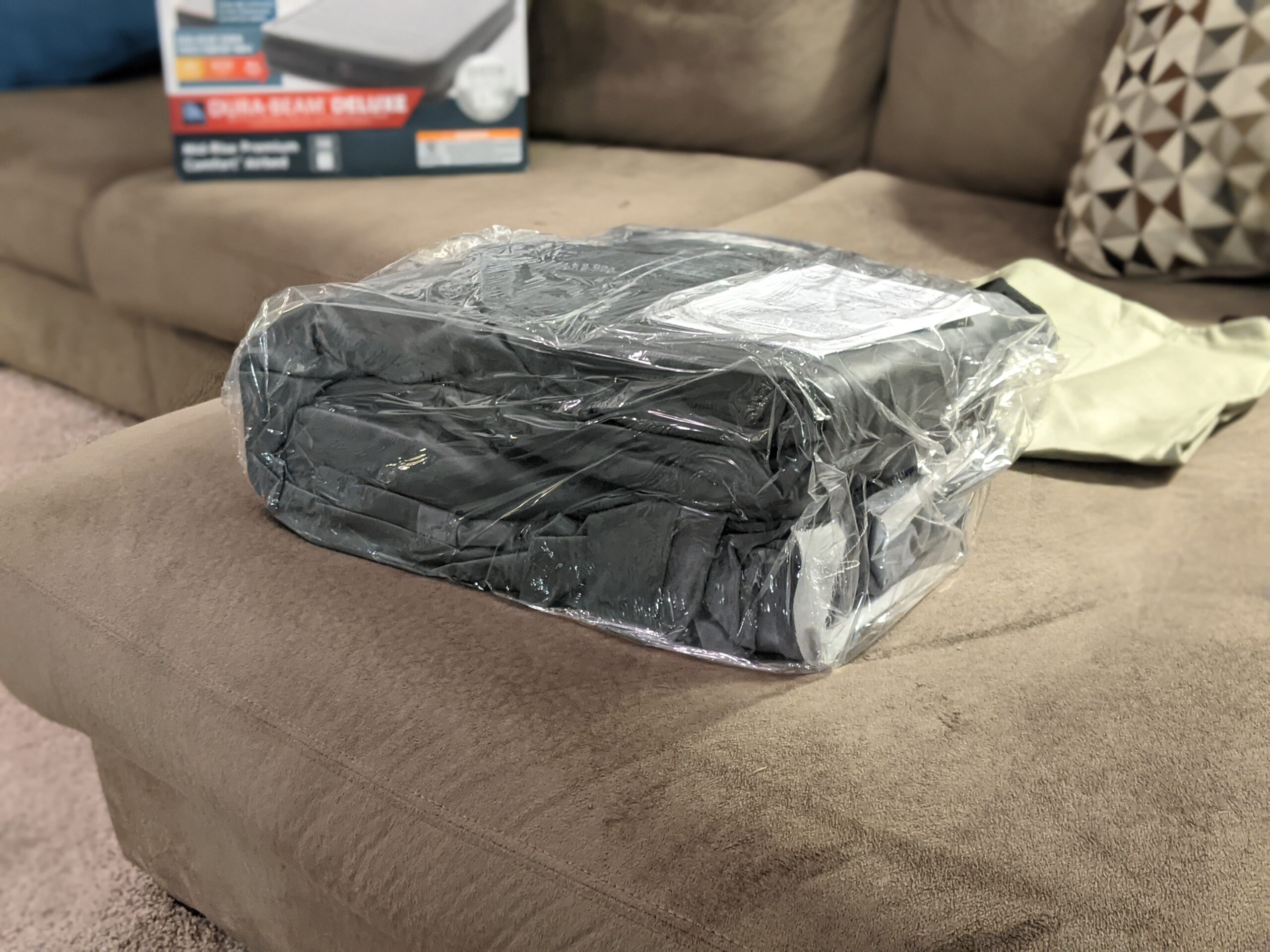


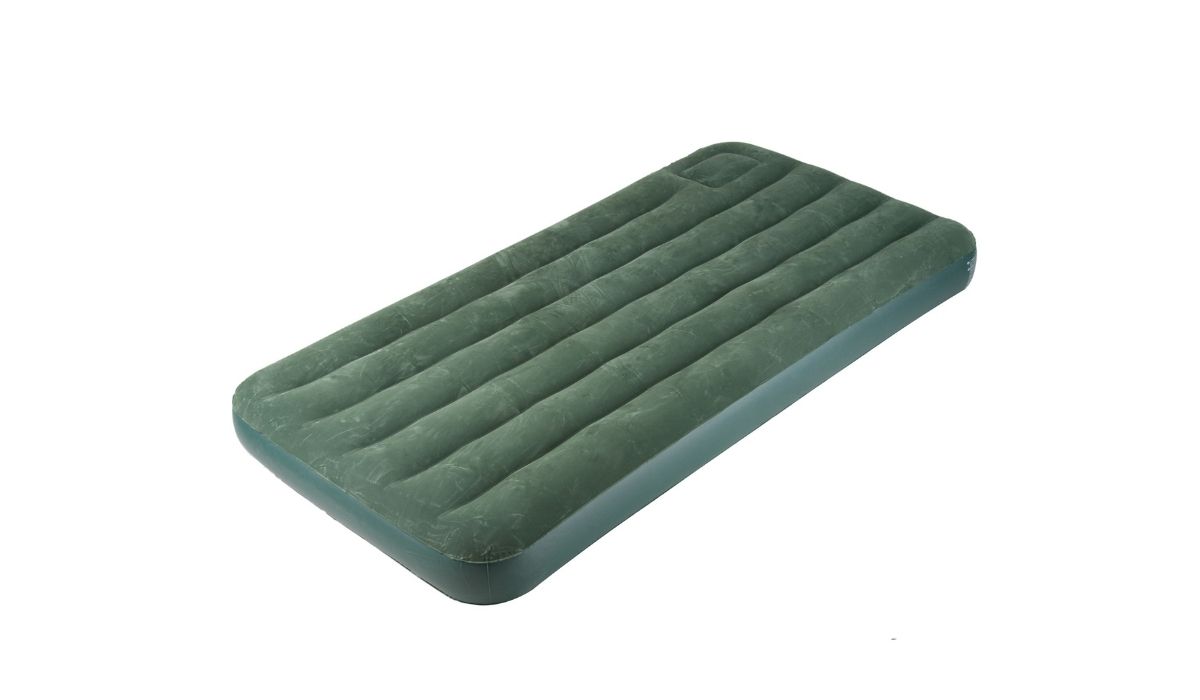


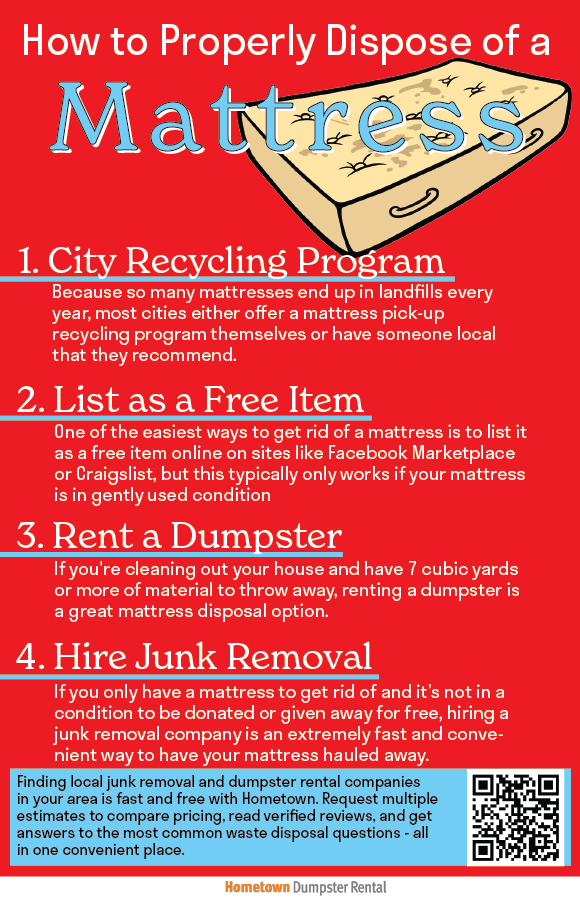



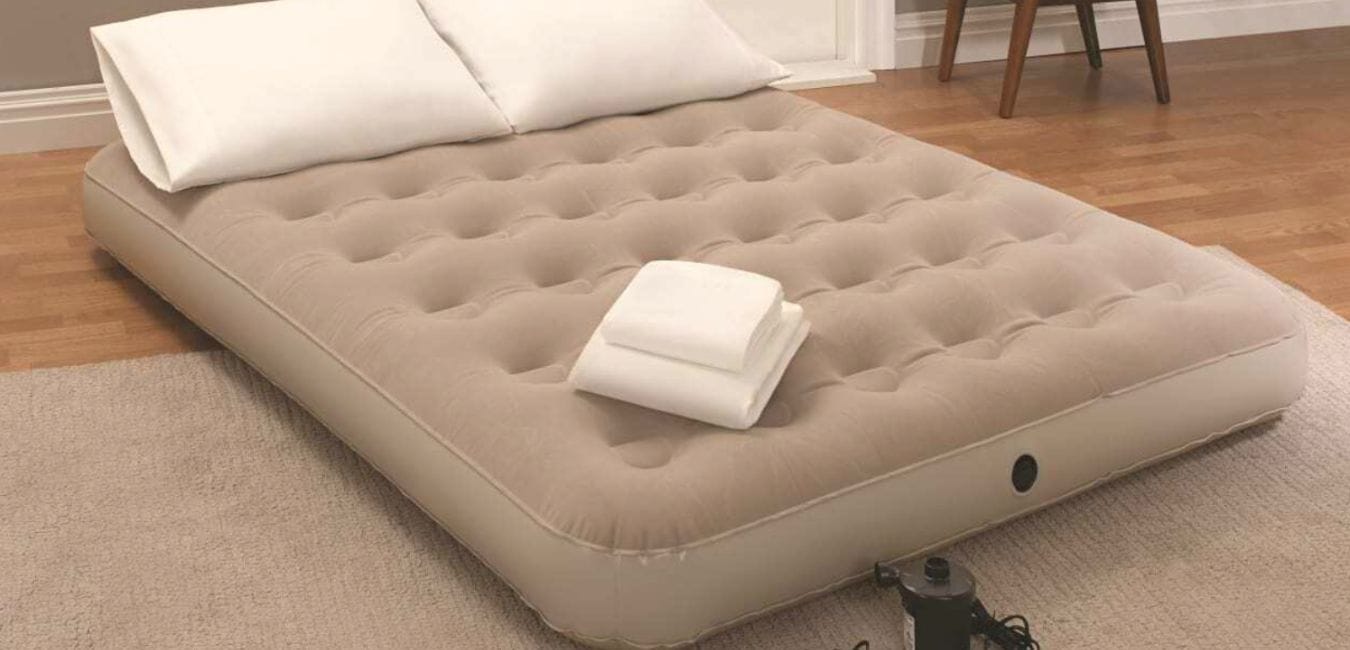






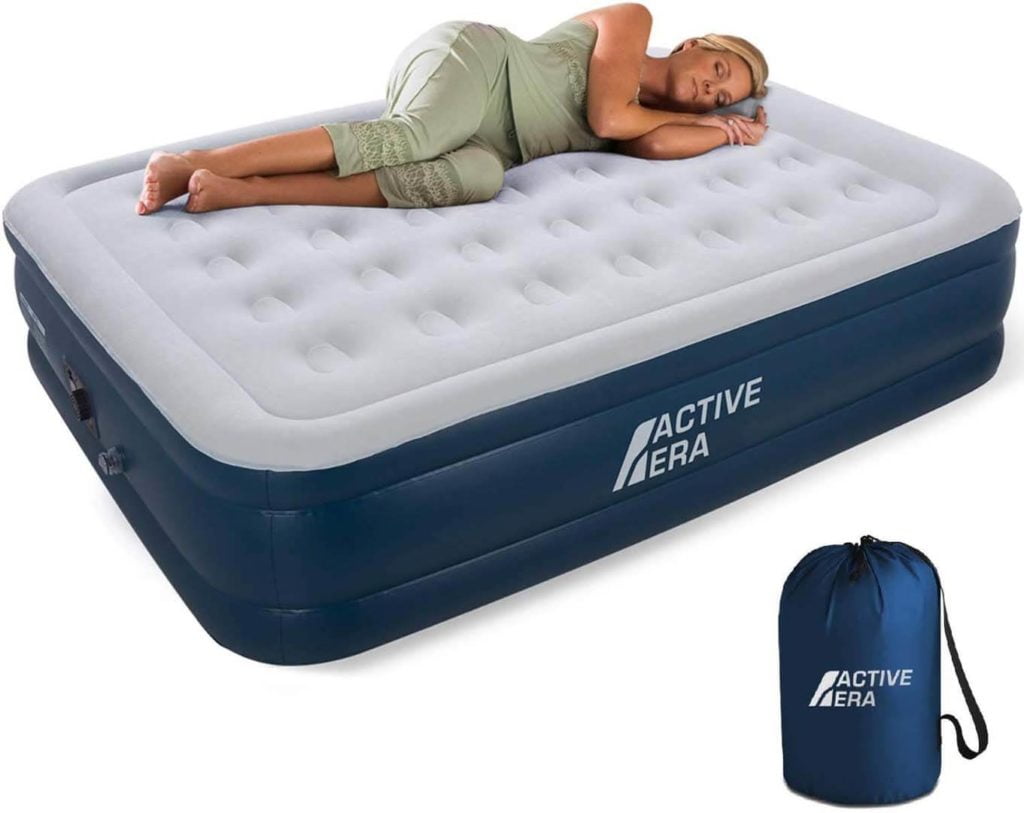
:max_bytes(150000):strip_icc()/aerobed-opti-comfort-queen-air-mattress-with-headboard-93c9f99d65ee4cce88edf90b9411b1cd.jpg)

